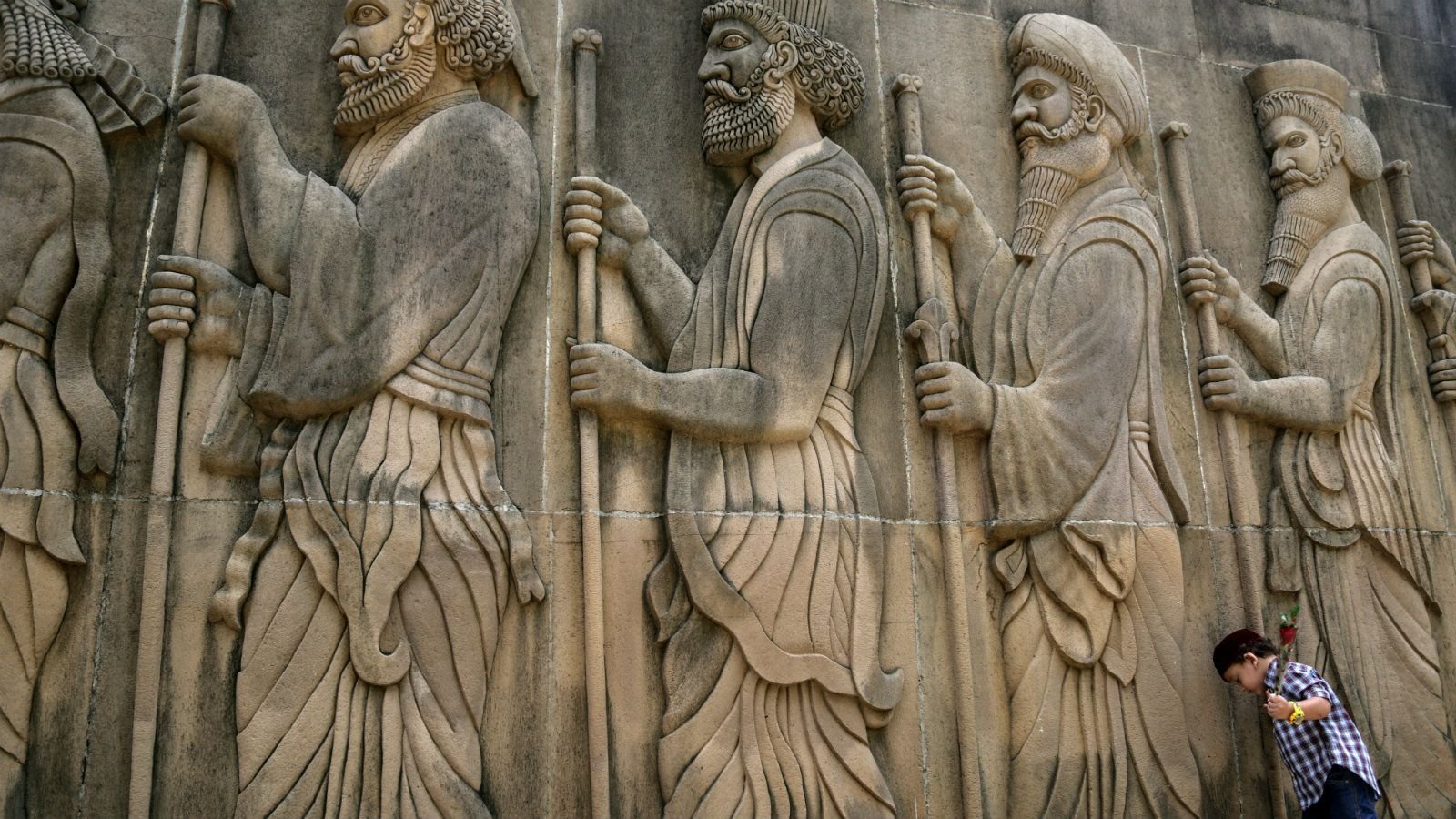The grit, fun, and madness behind the chikoo farms of Indian Parsis
As the legend goes, in the 7th century, when the first wave of Zoroastrians landed on the shores of western India, the local ruler Jadav Rana sent the leader of the group a glass of milk filled to the brim. “There is no place here,” was the cryptic message, “we are full.” The glass was returned, seemingly untouched, but it had been sweetened with sugar, which blended with the rich milk. “We will disturb no one,” was the message sent back with the glass of milk, “We will enhance the surroundings of our new homeland, but change nothing.”
 In the coastal towns of Dahanu and Gholvad in Maharashtra, a community of Irani families celebrate Navroz with a traditional harvest feast symbolised by the haft-seen table, much like their ancestors did. Once agriculturists in the Yazd province of Iran, they were the last of the Zoroastrians to land on the shores of Udvada, where the sacred fire brought by their predecessors centuries before still burns. They brought their farming skills to the new homeland, adapting and adjusting to new ways, while preserving the traditions and rituals of their ancestors.
In the coastal towns of Dahanu and Gholvad in Maharashtra, a community of Irani families celebrate Navroz with a traditional harvest feast symbolised by the haft-seen table, much like their ancestors did. Once agriculturists in the Yazd province of Iran, they were the last of the Zoroastrians to land on the shores of Udvada, where the sacred fire brought by their predecessors centuries before still burns. They brought their farming skills to the new homeland, adapting and adjusting to new ways, while preserving the traditions and rituals of their ancestors.
Jamshid’s story depicts the journey of more recent migrants, the Iranis who fled persecution under the Qajar rulers, from Yazd in Persia to a tiny village in western India, in the 20th century. Their history is entwined with that of the indigenous Warli tribes, who claimed the land as their own centuries before the arrival of the Iranis.
…
Jamshid was 12 when he left and nearly 14 when he reached Udvada, but his mother and sister were not waiting there, as he had expected. His mother had died soon after they left, when, still weakened by an illness, she succumbed after a sandstorm. His sister died in Bombay, he was told, and had left a book for him. Tears filled his eyes when he heard the news, but he willed them not to roll down; he must be a man, his father would have wanted that.
…
When Jamshid made his first 1,000 rupees, he hid the crumpled notes and coins behind a loose stone in the wall behind the string cot he slept on. For some years he bought eggs at wholesale rates and resold them at a small profit. He saved every paisa he earned for one purpose—to buy land and build a house.
…
On such a piece of land he planted the first batch of chikoo trees in long, neat rows, each numbered and recorded in his book. The pomegranate orchards on his farm in Yazd would now be heavy with the jewel-like fruit, he reminisced. But that was the past; the new trees that he was raising would yield the homeliest brown fruit that now symbolised his life here in this new land.
The house in the new orchard was almost complete when he had brought Shirin, his bride, home.
…
The early morning Janata Express from Mumbai Central leaves at 7:25am each morning and arrives at the railway station in Dahanu by 10:06am, surprising me with its punctuality. The train ride had been lively with the chatter of our co-passengers; they were mostly Irani and Parsi families making the annual trip to visit relatives for Navroz, with bags of sweets and presents for the traditional table. There were some city dwellers making the monthly trip to their chikoo wadis, and a group of young Parsis and Iranis who would go on to Udvada, the religious centre of the Zoroastrian community.
…
I arrived at Dahanu Road, the quaint railway station built in 1898, years before the Irani farmers planted the first chikoo sapling in the vast Sahyadri plains.
The acres of chikoo farms started from Bordi, stretched out past Dahanu and Gholvad to Udvada in Gujarat. Karnataka and Maharashtra are the largest producers of chikoo in the country. No one can agree on how the sapodilla (chikoo) reached these shores. Some believe the plants were originally brought in from Guatemala by the Irani foreman of the thermal plant, when he went to get industrial products for the rail line. In another version the plant was brought over from the nursery of Bombay’s Hanging Gardens by Cawasji Patel, whose descendants still own farmlands in the area. The task of breaking the sandy black cotton soil in the arid plains and making it fit for cultivation was a joint endeavour of the Irani landlords and Warli labourers. The countryside is now lush with orchards and rice fields that stretch out to the shores; edged on both sides by the industrial townships near Mumbai and Gujarat, Dahanu taluk remains a green oasis.
…
There are 41 varieties of chikoo—also known as sapota—in India.
I am surprised by this bit of information for I had previously known this much-loved fruit as merely round or oval. At first glance, the chikoo is probably one of the most unappealing fruits. A thin, grainy brown skin covers flesh that even when ripe exudes barely a fragrant whiff to invite a bite. To this extent it resembles another drab brown fruit—the kiwi, but the resemblance ends there. Once a kiwi is cut, it bursts into its new avatar as a tropical beauty, revealing the stunning green flesh inside specked with evenly spaced black seeds. The chikoo remains brown and wholesome, but as a loyal patron, I will testify to its superior flavour; looks indeed are deceptive. Perhaps in keeping with its homeliness, it is considered the common man’s fruit—good value for money, flavourful, inexpensive and available most of the year. For an aficionado, it is a luscious, satisfying serving of pure fruit. Once the thin skin is peeled away and the large seeds are plied out, the fleshy segments can be eaten as fruit or churned into milkshakes and ice creams. But the fruit has more to offer for it comes packed with nutrients—vitamins A, B and C and essential minerals like calcium, phosphorus, iron, magnesium, zinc, copper, selenium and folate. It also contains natural fructose and sucrose, and a natural anti-inflammatory, tannin. This delicious, easily digestible fruit makes up for its plainness with its nutritious properties.
…
Up in a clear blue sky one morning, a small aircraft streaked across, ducking behind clouds; was it Behramshah the flying doctor surveying his chikoo fields from high above? At the gathering in Nargis Irani’s farmhouse, the guests had spoken of his plane: “Every day he goes for a little chakkar up to the skies above the chikoo fields, and over the shores and little towns along the coast.” I had read in a magazine that the doctor’s little flying machine was fashioned from a tricycle attached to the wings of an old hang-glider, and fitted with an outboard motor and a propeller.
Recently, when I called his sister Moti Ragaby, she stoutly refuted this, “Nonsense! Tricycle parts, oh no. My brother has an ultralight, and yes, I’ve been up with him many times, what a sight it was from up there, you can see all of Dahanu. Now it’s not safe anymore, he doesn’t take the plane out much. There’s plastic blowing in the wind on the beach that might get entangled in the propeller.”
True or not, the story of the good doctor whizzing about on his flying tricycle brought a smile to my face, for it encapsulated the Irani spirit completely, the fun and madness of every Parsi and Irani I have known.
…
Some years after my visit to Dahanu, I met Kauzian Ahura who had returned from a corporate career in the US after his father’s death, to take over the family farm. I had heard the Irani residents express their fears—their children, the next generation, were leaving for career opportunities in the big cities or in other countries. Soon the land acquired by their ancestors and cultivated with much hardship would be sold, their legacy forgotten. “All is not lost yet,” I wanted to tell my friends in Dahanu when I heard Kauzian speak passionately about the farming life. Kauzian brings to the field his own brand of entrepreneurship combined with an innate feel for the land. Between snatches of conversation, he is busy on his phone taking orders for his prime chikoos, his voice changing abruptly from jovial and easy-going to a brisk businesslike tone.
…
So what brought about this life change, and the interest in farming, I asked him. With a twinkle in his eye, he answered, “I realised I had a green thumb when the marijuana plants I grew in the closet in my college room flourished. I knew then I had farming genes.”
Excerpted from Lathika George’s book Mother Earth, Sister Seed, with permission from Penguin.





